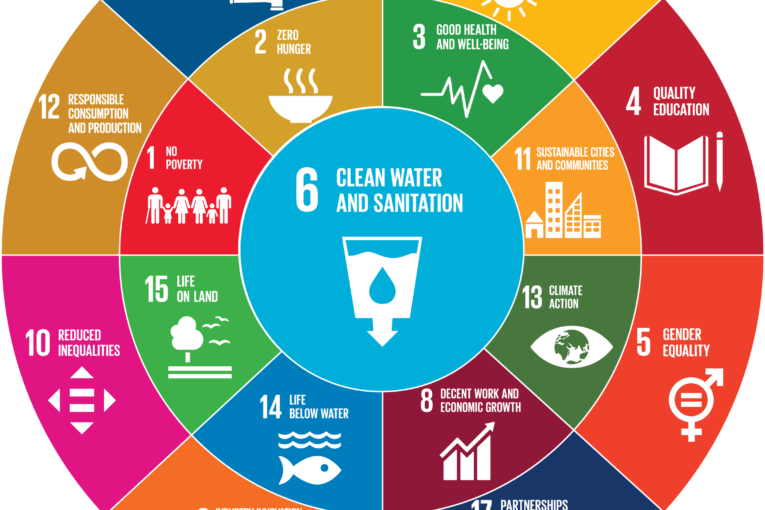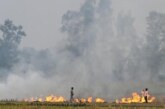
Dr. Arvind Kumar |President & Founder| India Water Foundation |

With Prime Minister Modiji embarking “India to strive for self-reliance, use vast resources to produce for global market as well” during 74th Independence day, nestled in the Himalayas states, North East Region (NER) echoes a gateway to realize India’s Atma-Nirbhar Bharat vision binding economic, socio-cultural and environmental relationships with our mainstream India.
Celled as ‘Seven Sisters and One Little Brother’, NER is a treasure house of biodiversity, natural resources, tourist destination and blessed with natural resources and very much enriched with bio-diversity. Landscape constituents of the region such as hills (60%), plateaus (12 %) and plains (28 %) along with river systems contribute substantially in enriching its scenic component. Hailing the cleanliness and hygiene culture followed by the people of the Northeast Indian states, the region has a potential to set a precedent for mainstream states of India.
Coming together in the age of SDGs
With recent innovative programs such as KVIC initiating Khadi and tourism in a tribal village of Chullyu in Arunachal Pradesh and Chief Minister Pema Khandu launching the Arunachal Pradesh Entrepreneurship Development Programme, such initiatives can catalyze an entrepreneurial ecosystem laying a hallmark towards vibrant, self-reliant and inclusive society.
India has fully adopted the SDG framework and aligned its development priorities with the Global Goals and North East region is showing prospective outcomes to realize SDGs. All North East states have been regarded as ‘performers’ in NITI Aayog SDG 2030 index. The 17 goals are inter-connected and in order to leave no one behind, it is important that the states take efforts to achieve them all by 2030. This is a welcome step and from time-to-time, the region has set tremendous milestones and precedent for other states to learn and customize.
With Union Budget 2020-21 according the highest priority to the overall development of North Eastern Region and Budget for North East Council doubled from Rs 700 Crore to Rs 1474 Crore in the last five years, such substantial funding holds the key towards sustaining the infrastructure, institutions and capacity building measures in the region. This is in tune with Prime Minister’s vision of holistic development for North East India and shall enhance development of deprived areas; balance socio-economic development, mainstream deprived sections of society and emerging priority sectors in the North Eastern States
Sustainable development is closely linked to public welfare and development of society and environment. On the contrary, long term neglect of the community’s needs like education, inclusion, market access, human skills have pushed them towards certain challenging situations like migration, poverty, violence, insurgency, exclusion. Despite rich in natural resources, an integrated natural resource management is yet to be implemented.
Stumbling blocks that derail the sustainability of NER
The Northeast Asian region is undergoing an unprecedented speed and scale of environmental degradation. The Brahmaputra is one of the world’s largest rivers, with a drainage basin of 580,000 sq km, 33% of which is in India. According to a 2015 report published by the Assam government, steady erosion by the Brahmaputra led to the destruction of over 3,800 km2 of farmland since 1954. Assam has been historically flood-prone and recent floods have caused widespread despair in North East especially in Assam with situation grim in neighboring states like Meghalaya, Arunachal Pradesh and Sikkim. Environmentalists have cautioned about engineering solutions towards deepening Brahmaputra river basin leading to environmental degradation and proposed for careful environmental assessments. The threat is especially great wherever people’s livelihoods are particularly dependent on natural resources. In such vulnerable scenario, climate adaptation measures are of central importance for the protection of lives and livelihoods and ensuring sustainable development. The recently constituted North East Water Management Authority under Prime Minister’s stewardship is a welcome step to deal with flood and erosion.
Home to one of the six most seismically active regions of the world, construction of big dams on highly seismicity area like North East is a vulnerable task but even then, mega hydroelectricity projects are installed in these eco-fragile regions. For example, it is projected that the 2,880 MW Dibang Multipurpose Project in Arunachal one of the largest planned in India has potential to displace large communities. Further, the forest cover in the northeast with an exception of Assam and Tripura marked a decline showing a decrease of forest cover by 765 sq. km. compared to 2017 data according to Indian State of Forests report 2019, all the States in the region show decrease in forest cover’ with the decline attributed to shifting cultivation.
How can NER enhance vibrant India narratives?
NER in recent years have remained connected to mainstream India, it is time to upscale their performance towards a vibrant region. While PM’s mantra of calling North East India the vehicle of peace, progress and prosperity, its holistic development finds echo among the communities for better development.
During my understanding of NER since a decade, I have essentially emphasized the role of natural ecosystems, biodiversity and ecosystem services in underpinning sustainable development and ensure that the twin goal of natural resource management and livelihoods shall be incorporated in development interventions and programme. Strategic perspectives highlighting the broad contours of Water Resources, Agriculture, Energy along with Climate Change Adaptation, Knowledge Management and capacity building through people-centric perspective can lead to iconic milestones.
Of late, the Manipur Water Supply project has been designed to provide Fast Household Tap Connections households in 16 districts of Manipur is a worthwhile initiative to provide safe drinking water to its communities to nearly 3 lakh households. Meghalaya and Sikkim have already implemented water schemes and streamline provisioning of water witnessed through Meghalaya Water Act 2019 and ‘Water from Source to Tap’. These steps rightly indicate a reflection towards Government of India’s water availability and a prosperous North East in terms of water security. India Water Foundation, New Delhi based civil society as knowledge partner with Government of Meghalaya and Sikkim have executed sustainable water-related interventions; capacity building and branding and look forward to customize similar endeavors in other states as well. As pioneering step towards eco-friendly initiatives, strategies for water conservation must be leveraged to make water available first towards sustainable use as well as adapt to the climate change phenomenon. In short, comprehensive water management must call for holistic, integrated and efficient management for sustainable management of the State’s water resources.
Healthy environment is central to socio-economic activity and growth and Sikkim has already won the world’s first organic state award and recently, food park inaugurated in Mizoram has a potential to realize towards food security, augment jobs & livelihood and enhance farmers’ incomes. Alternatives such as herbs, spices and organic sustainable practices can be an added boon and setting up small and medium scale industries based on huge quantities of bamboo, cane, jute, paddy husk and medicinal plants can churn the tourism and financial wheels of the community. North-East farmers have a potential to take up oil palm cultivation boosting farming opportunities and earn better economic returns and placing India as an assured market for palm oils. Tapping the potential of the tourism industry in NER and development of the region as a bamboo industry hub, IT hubs are round the corner in states of Assam and Meghalaya with ability of technology deployment swiftly undertaken.
Thwarting the rapid degradation of North-East, wetlands act as natural bulwarks against floods, is also important. There are 7,731 wetlands in the NE states and the bio-diversity rich northeast accounts for almost 5 per cent of the wetlands in the country, the Deepor Beel in Assam, Rudra Sagar in Tripura and Loktak Lake in Manipur being the major wetlands. The recent ‘Guidelines for implementing Wetland (Conservation and Management) Rules 2017, MoEF&CC, Government of India if implemented shall ensure environmental sustainability, ecological balance, protection of flora and fauna, conservation of natural resources and maintaining quality of wetlands.
Harnessing the potential hydropower of the Northeastern Region, an avenue of growth can be opened and provide an opportunity of self reliance to the people of this region and make sound contribution to the national economy. The development of the Northeastern Region’s hydro potential should be satisfactory after understanding potential eco-fragile risks, need for multi-purpose reservoirs. Without the participation of local people, any development activity can’t be successful, so, continuous awareness programs with local people must be strengthened to enhance their perception on Hydro projects of North-East India.
Northeast India is a home to some of the tribal communities taking great pride in their forests, nature worship, sacred groves and indigenous way of living. Cultural diversity has paved a way towards integrity and co-existing with forests promoting transformative partnerships that help to adapt to the effects of climate change and build resilient societies. Augmenting to enhance forest cover, an increase in forests shall mean efforts to curb shifting cultivation and switch to both farm and non-farm livelihoods for people to sustain. To examine forest degradation, a need exists to uphold the concept of sustainable management of forest resources and promote environmentally sound forest conservation measures by involving indigenous and local communities.
Environmental sustainability is a broad term and is a key pillar of sustainable development and NER has the potential to bring transformation and drive change towards critical tenets of self-reliance, indigeneity, inclusion and governance without compromising the ability of the environmental services and its natural landscapes. Collectively, people must be aware of and concerned about environmental problems and to also work individually and collectively towards solving the current problems and preventing the occurrence of new ones. Convergence, Cohesion and Cooperation is benevolently the need of the hour if North East is proposed as vehicle to realise Atma Nirbhar Bharat and SDGs 2030.



